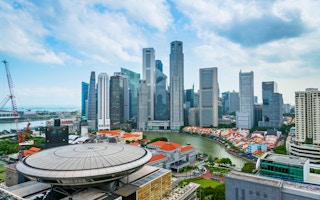Putting paid to the old adage that you can’t manage what you can’t measure, Singapore’s Building and Construction Authority on Wednesday published the second edition of its energy benchmarking report for commercial buildings, which enables the public to compare their energy performance for the first time.
The Building Energy Benchmarking Report (BEBR) 2015, which collected data from 1,018 commercial buildings, offers a comparative study of their energy use based on two years’ worth of data.
Some of the study’s top findings include the fact that people in Singapore’s offices are consuming as much energy as their building owners, putting a spotlight on the role that users must play in reducing overall energy consumption.
This is especially important in light of Singapore’s commitment to the United Nations ahead of the climate change talks in Paris to reduce its carbon emissions intensity by 36 per cent from 2005 levels by 2030. That is, carbon emitted for every dollar of gross domestic product (GDP).
Launching the report at the three-day International Green Building Conference held in Singapore, Permanent Secretary Choi Shing Kwok of the Ministry of Environment and Water Resources said the finding reaffirms “the potential for tenants to play more active roles in improving the performance of their premises”.
The study also showed a positive trend: the Republic’s commercial buildings achieved better energy performance in 2014 compared to 2013, with retail buildings showing the most significant improvement in average EUI (Energy Use per unit GFA) at 4.6 per cent.
Buildings certified with the BCA’s flagship Green Mark Scheme, which rates buildings for their sustainability performance, also continued to perform better in electricity consumption - as much as 15 per cent improvement in EUI for offices and 10 per cent for retail buildings - than non-certified buildings.
“These are useful sign posts for the built environment sector to build upon,” Choi told the 500-strong audience of industry professionals.
BCA added in a statement that it will be including more building types, namely tertiary institutions and health-care facilities, in its next benchmarking report. First launched last year, the study aims to raise awareness on the energy performance of buildings and drive change towards energy consumption behaviour .
“This [upcoming report] will lead to a more comprehensive overview of the energy performance of buildings in Singapore. BCA will also continue to identify buildings with high potential for energy improvement and engage building owners on areas of improvement, as well as promote the business case for green buildings,” it said.
Dr John Keung, BCA’s chief executive, added: “With our green building policies and energy performance monitoring strategy firmly in place, we hope to see steady and sustained improvement year on year.”
“I am confident Singapore is well on track to achieve our national target to green 80 per cent of our building stock, and contribute to the achievement of Singapore’s Intended Nationally Determined Contribution.”
Eco-Business is producing a special e-newsletter featuring stories on the proceedings at IGBC 2015, kindly supported by City Developments Ltd and the Building and Construction Authority. Sign up to receive the newsletter here.















